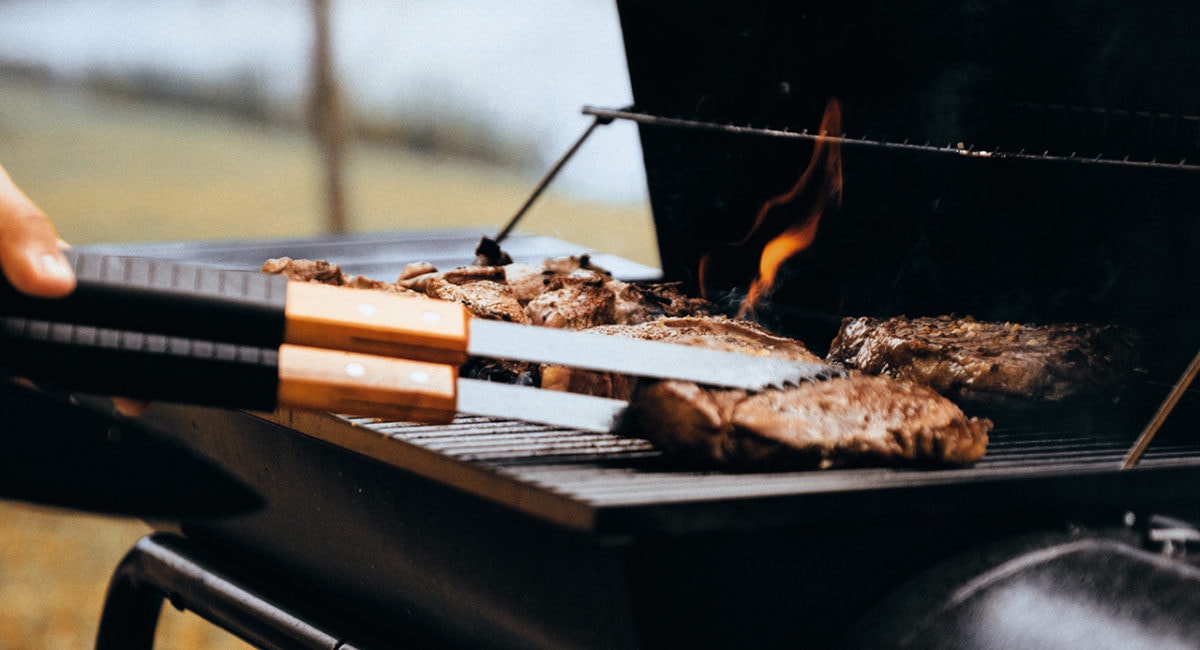How to Cook a Tender, Juicy Grass-Fed Steak Every Time
/ on
For most aspiring chefs and backyard grill masters, there is sometimes a brief moment of trepidation before cooking a steak. The coals of the grill are red-hot, and you unwrap a beautiful prime rib or filet mignon that you’ve let sit at room temperature, then, you pause and think: “How do I not screw this up.”
Buying the perfect steak and actually executing the process of cooking the perfect steak are two entirely different things.
We’ve shared some of our favorite recipes and methods of cooking beef, but we haven’t discussed doneness very often. Here are some guidelines to help you cook a tender, juicy steak every time so you won’t have to have that moment of pre-cooking worry ever again.
From our perspective, the perfect level of doneness for a steak is medium-rare. For most cuts of beef, cooking to this level makes for tender, juicy meat that melts in your mouth. When it comes to grass-fed beef, medium-rare is ideal as well because grass-fed meat becomes tougher and dryer cooked to a higher internal temperature.
Grass-fed recommendations
Because grass-fed, grass-finished beef has less fat than conventional beef, it can easily be overcooked. The American Grassfed Association suggests that grass-fed beef is “ideal at rare to medium-rare temperatures.”
According to the USDA recommendations, beef should be cooked to an internal temperature of 145 degrees for medium doneness. The ideal internal temperature is 125 degrees for rare and 135 degrees for medium-rare for beef. You can check the temperature with a meat thermometer or other cooking thermometer right on the grill or in the oven.
The USDA recommends letting steak rest for three minutes to finish cooking, but our Head ButcherBox Chef, Yankel Polak, thinks it is better to let a cut of beef sit for about eight or 10 minutes to finish cooking. Letting beef rest before cutting will allow a steak cook more evenly and keep its juices.
Because beef still cooks during the resting period, the American Grassfed Association suggests removing a steak when it is five to 10 degrees cooler than the temperature you are trying to achieve. As the beef continues cooking at room temperature while off a heat source, it will reach the expected internal temperature after the rest period.
The Grassfed Association also says that if you prefer meat well-done, grass-fed and grass-finished beef can be cooked longer at a low temperature. They also suggest cooking with or in a sauce to add moisture to more well-done cuts of beef.
Grass-fed beef cooks 30 percent faster than conventional grain-fed beef, so you need to be paying attention while grilling or roasting. There is nothing worse than ruining a delicious cut of grass-fed meat by cooking it incorrectly.
Specifics on cooking beef cuts
While the recommendations on getting the right level of doneness can be measured using an instant-read thermometer, the tricks for getting the perfect steak have more to do with cooking methods, cooking temperatures, and a few other factors.
First, you should have an understanding of where the cut of beef comes from on a cow. Differences in cut from various sections of a cow — know as “primals” — play a key role in how a steak cooks. Ribeye steaks, filet mignon, and strip steaks all come from sections that get less usage. This is why they are so naturally tender.
These steaks are best seared and then cooked with dry heat. You can sear them in a pan and then roast or broil them in the oven, or, brown them on a gas grill on high heat or over red-hot charcoals and then move to a cooler section where they will cook from indirect heat.
For example, Chef Yankel recommends that for a New York strip steak, you should cook for four to five minutes per side on the hot part of a gas or charcoal grill, and then move to a cooler section for two to three minutes for each side. This will result in a delicious, medium-rare steak.
Other cuts of beef, especially those that come from the area of a cow that get more use, are often less tender and need to be marinated before being grilled or slow-cooked. This is especially true of flank steaks, skirt steaks, brisket, or hanger steaks. These steaks benefit from longer cooking times and spices, rubs, and marinades to be more tender. Another key for these types of steak is making sure they are cut correctly.
For beef roasts, you should follow the USDA internal temperature guidelines or cook to a temperature that you are comfortable with. The chart below has some suggested cooking times for roasts.
USDA recommendations for other cuts and types of meat
The reason that meat temperature guidelines exist is to make sure that any bacteria that may be on the surface of a steak or roast are eliminated. An external temperature of 160 degrees will do the job. Any harmful bacteria, like E. coli, is only found on the surface of meat, so a 145-degree internal temperature for medium is safe. Whether grilling or roasting, the external temperature threshold is easily achieved to get the recommended internal temperature.
USDA has a different guideline for ground beef, which they suggest cooking to an internal temperature of 160 degrees for medium doneness. Ground beef has more surface area that can be contaminated as opposed to a larger, single cut.
The 145 degrees internal temperature for steaks and roasts is the same internal temperature the USDA suggests for pork, veal, lamb chops, and roasts. For ham, the suggestion is 145 degrees as well with the same three-minute resting period.
For chicken, turkey, and other poultry — chicken or turkey breasts, a whole bird, legs, thighs, wings, ground poultry, and stuffing — the USDA recommendation is that the meat is cooked to an internal temperature of 165 degrees. The best place to check the temperature of a whole bird is the thickest part of its thigh, but you need to make sure that you are not touching any bone. The bone can be either much hotter or much cooler than the surrounding meat based on how long it has been cooking, which will give an inaccurate temperature.
For more, check out the chart at FoodSafety.org that gives more details on the recommendations for cooking times and temperatures.
Grass-Fed Beef Guide
Table of Contents
About Grass-Fed
- What is Grass-Finished Beef?
- Grass-Fed vs. Grass-Finished
- Grass-Fed vs. Grain-Fed
- 100% Grass-Fed Beef vs. Organic Beef
Benefits of Grass-Fed
- Grass-Fed Beef Benefits
- Grass-Fed Beef in the Most Popular Diets
- Is Grass-Fed Beef Better for the Environment?
Buying Grass-Fed
- Grass-Fed Beef in America
- Why It Is Difficult to Find Butcher Shops
- How to Buy Grass-Fed Beef with No Stores Nearby
Cooking & Eating Grass-Fed
Dennis Keohane is the Editorial Director for ButcherBox.


